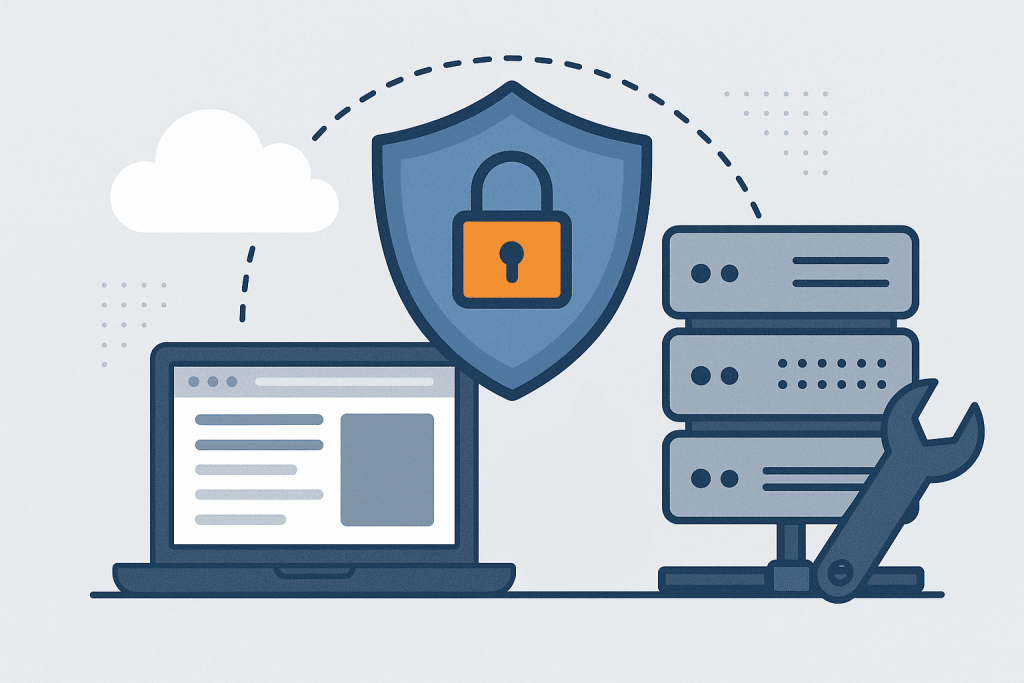
When your website is ready to go live, the most important step is ensuring that the server hosting it is properly secured. Many project owners focus on design, speed, or content but forget the essential foundation — protection against attacks and data leaks. On the internet, every server is a potential target for hackers, so security cannot be postponed. Proper preparation before launch helps avoid most risks and ensures stable website operation from day one.
System Updates and Patches
The first step toward security is keeping your software up to date. Even the most modern server becomes vulnerable if it runs outdated packages or an old operating system kernel. Developers regularly release updates that fix discovered bugs and security issues, so installing the latest versions is a must. This applies not only to the OS but also to all components — the web server, database, control panel, libraries, and CMS. Even if your system seems stable, without updates it can become an easy target for exploits actively circulating online.
Firewall Configuration and Access Restrictions
No server should be fully open to everyone. Before launch, make sure that only the necessary ports are accessible — usually HTTP, HTTPS, and SSH. All other ports should be closed to eliminate potential entry points. A firewall serves as a basic layer of protection, controlling inbound and outbound connections. Additionally, you can configure IP-based filtering so that server administration is possible only from specific networks. This reduces the risk of unauthorized login attempts.
Secure Authentication and SSH Access
One of the most common hacking methods is password guessing. That’s why standard logins like “root” and weak combinations such as “admin123” should be avoided entirely. It’s recommended to create a separate user with limited privileges and disable direct root login via SSH. For authentication, it’s best to use SSH keys — allowing access only when the private key is stored on your computer. If you need to keep password login, consider enabling two-factor authentication or changing the default SSH port to make brute-force attacks more difficult.
Data Encryption and HTTPS
Once your server is ready, installing an SSL certificate is essential. Without it, any data transmitted between the user and the site — passwords, contact details, or credit card numbers — can be intercepted. HTTPS is now the standard, not an option. You can obtain a certificate for free (for example, via Let’s Encrypt) or purchase a commercial one with extended validation. The key is to configure automatic renewal to prevent certificate expiration, which can make your site appear “unsafe” to browsers.
Protection Against DDoS and Hacking Attempts
Even small websites can become targets of large-scale attacks. A DDoS attack can overwhelm your server by generating massive amounts of simultaneous requests. To prevent this, enable traffic filtering. You can use external protection services (like Cloudflare) or install rate-limiting modules directly on your server. It’s also crucial to maintain access logs and review them periodically — this helps detect suspicious activity and respond before minor issues turn into major incidents.
Backups and Monitoring
No system is completely secure, which is why backups are your final line of defense. Before launching your site, set up automatic backups stored in a separate location — whether on another disk, a different server, or in the cloud. Also, make sure that data recovery from backups actually works — backups that haven’t been tested are as good as none. Additionally, set up monitoring: if your server experiences high load, memory issues, or network problems, the system should alert the administrator immediately.
Web Application and Database Security
The web server and database are the heart of your website and require special attention. For Apache or Nginx, make sure that directories do not allow file browsing (directory listing) and do not execute scripts unnecessarily. Configure your database to accept connections only locally or through a secure tunnel. User passwords should be stored in encrypted form, and access to the admin panel should be restricted by IP addresses or VPN. The fewer open interaction points you have, the harder it is for attackers to find vulnerabilities.
Preparing for Public Launch
Before your site becomes publicly available, perform a comprehensive “pre-launch security check.” Review open ports, update status, HTTPS settings, logs, backups, and access policies. If possible, conduct vulnerability testing using specialized tools that simulate common attack patterns. These tests help identify weak spots before real attackers do. Only after completing this process should you confidently open your server to the public, knowing it’s protected on all levels.
Conclusion
Server security is not a one-time task but a continuous process. It starts long before your site goes live and continues afterward. Proper configuration, regular updates, access control, backups, and monitoring form the foundation without which any online project remains exposed. If you want your website to run smoothly and inspire trust, take care of security before clicking “publish.”
For reliable hosting, choose Server.UA — here you can purchase an SSL certificate to protect your data and rent a VPS or dedicated server for your website.

Leave a Reply